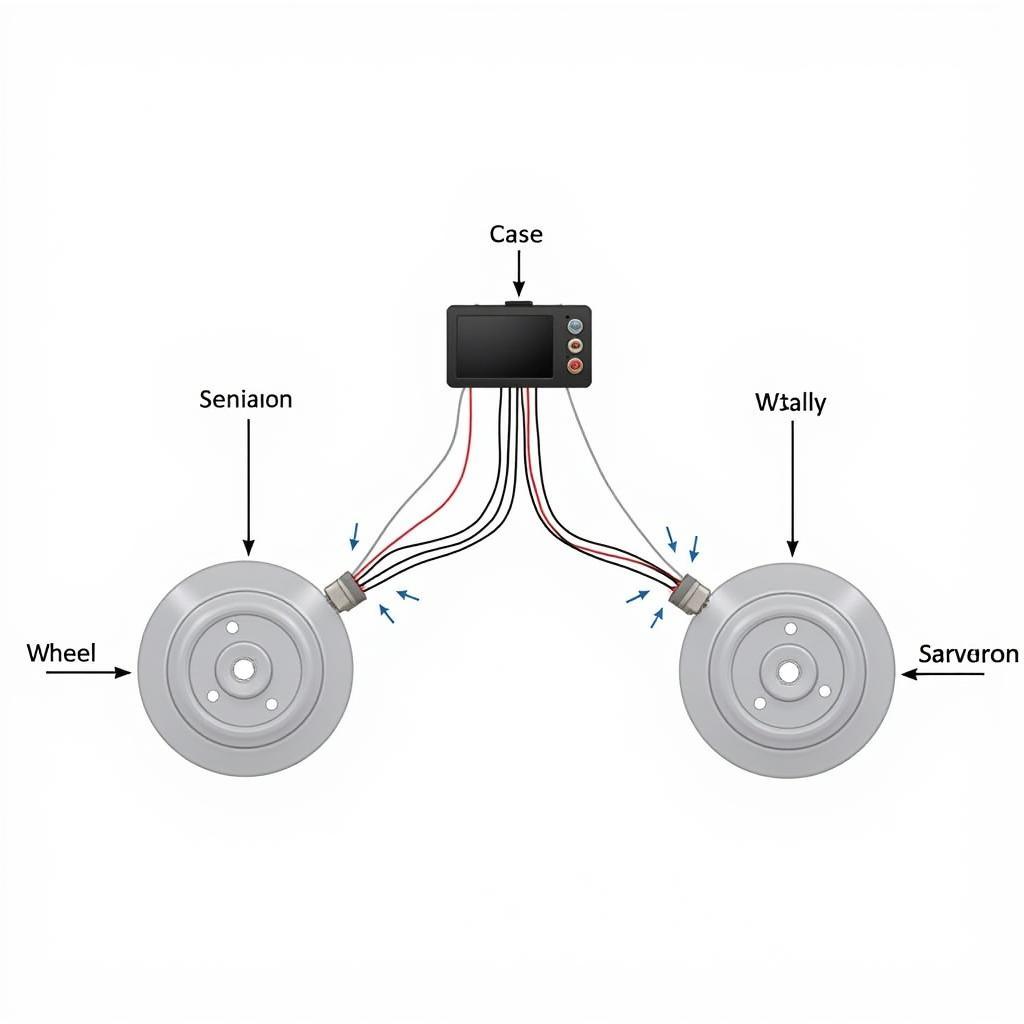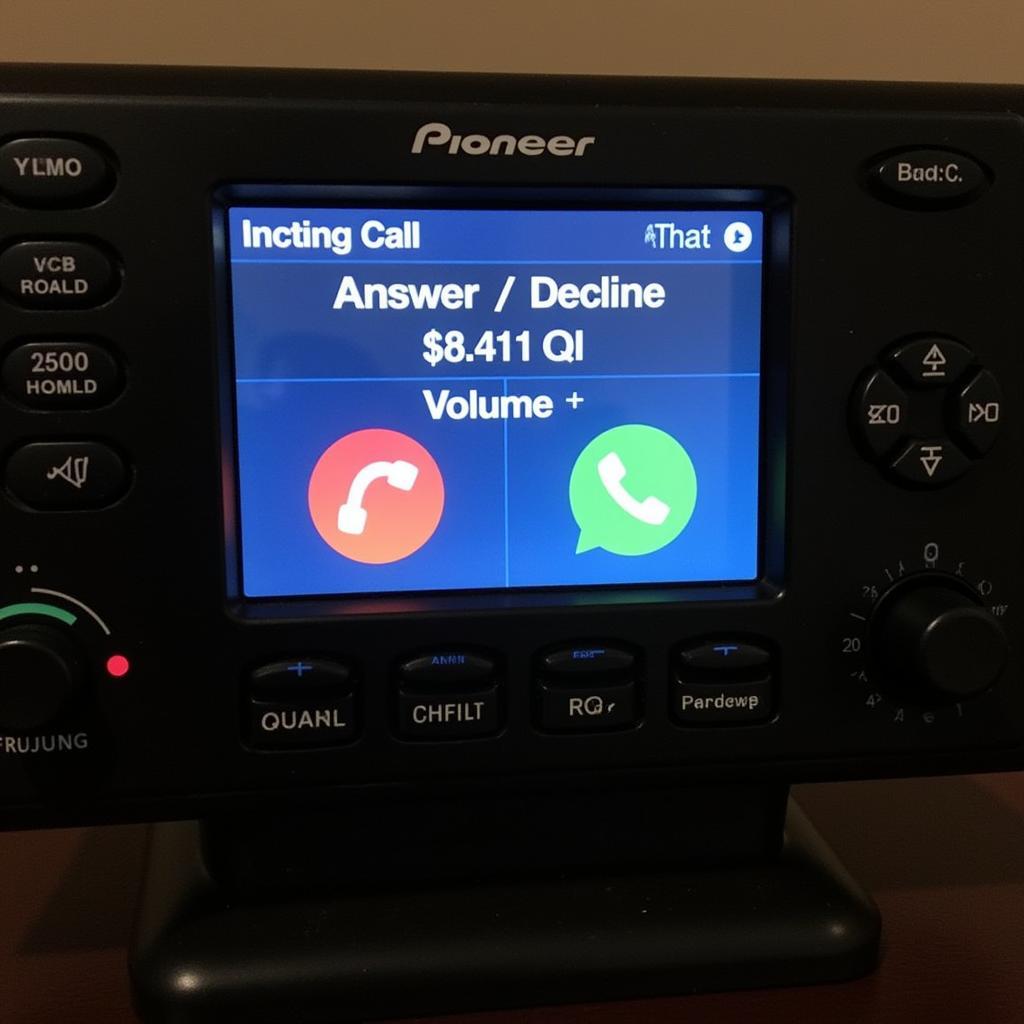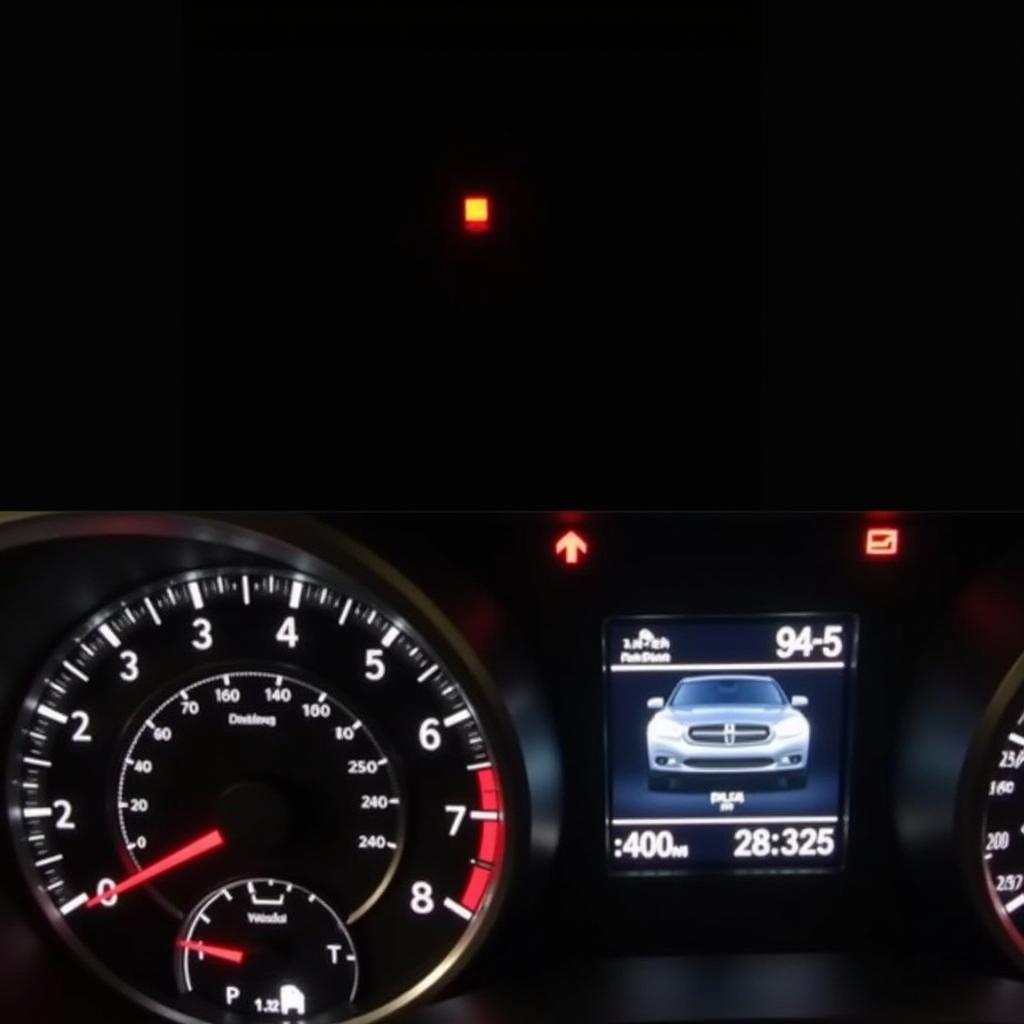The electronic brake force distribution system (EBD) warning light is a crucial safety feature in your vehicle. When illuminated, it signals a potential issue within the EBD system, which works in conjunction with your anti-lock braking system (ABS) to optimize braking force distribution and prevent wheel lockup during hard braking. Ignoring this warning light can compromise your vehicle’s braking performance and potentially lead to dangerous situations.
Understanding the EBD System and its Importance
The EBD system is designed to enhance vehicle stability and control during braking, particularly on surfaces with varying traction levels. Here’s how it works:
- Sensing Wheel Speed: Sensors constantly monitor the rotational speed of each wheel.
- Detecting Wheel Lockup: When braking hard, the system identifies if any wheel is about to lock up by detecting a sudden decrease in its rotational speed.
- Adjusting Brake Pressure: The EBD system automatically adjusts brake pressure to individual wheels, preventing lockup and maintaining optimal traction.
This precise brake force distribution ensures that the vehicle remains stable and controllable even under heavy braking conditions.
 EBD system diagram
EBD system diagram
Common Causes of an EBD Warning Light
Various factors can trigger the EBD warning light on your dashboard. Here are some common culprits:
- Faulty ABS Wheel Speed Sensor: A malfunctioning wheel speed sensor can disrupt the EBD system’s ability to accurately monitor wheel rotation.
- Worn Brake Pads or Rotors: Excessively worn brake components can affect brake pressure distribution and trigger the warning light.
- Low Brake Fluid Level: Insufficient brake fluid can impact hydraulic pressure within the braking system, potentially affecting EBD functionality.
- Malfunctioning ABS Control Module: The ABS control module is responsible for managing both ABS and EBD systems. A faulty module can disrupt their operation.
- Electrical Issues: Wiring problems, loose connections, or damaged circuits within the EBD system can cause communication errors and trigger the warning light.
“A common misconception is that the EBD warning light always indicates a major problem,” says automotive diagnostics expert, John Miller. “While it’s crucial to address the issue promptly, sometimes a simple fix like topping up brake fluid can resolve the problem.”
Troubleshooting Steps for an EBD Warning Light
If your EBD warning light illuminates, it’s essential to take immediate action to diagnose and address the underlying issue. Here are some troubleshooting steps you can take:
- Check Brake Fluid Level: Inspect the brake fluid reservoir and top up if necessary. Low brake fluid can significantly impact braking performance.
- Inspect Brake Pads and Rotors: Visually examine your brake pads and rotors for excessive wear and tear. Replace them if necessary.
- Scan for Diagnostic Trouble Codes: Use an OBD-II scanner to retrieve any stored diagnostic trouble codes related to the ABS or EBD system. These codes can pinpoint the specific area of concern.
- Seek Professional Assistance: If you’re unable to diagnose or resolve the issue yourself, it’s crucial to consult a qualified mechanic or automotive electrician for further inspection and repair.
Importance of Prompt Diagnosis and Repair
Ignoring an illuminated EBD warning light can have serious consequences for your safety and the performance of your vehicle. Here’s why prompt diagnosis and repair are crucial:
- Compromised Braking Performance: A malfunctioning EBD system can lead to reduced braking efficiency, increased stopping distances, and unpredictable vehicle behavior during braking.
- Increased Risk of Accidents: Without proper brake force distribution, your vehicle becomes more susceptible to skidding, especially on wet or slippery surfaces, increasing the likelihood of accidents.
- Costly Repairs: Delaying repairs can exacerbate existing issues and potentially lead to more extensive and expensive repairs down the line.
Conclusion
The electronic brake force distribution system warning light serves as a vital safety indicator in your vehicle. Addressing the underlying issue promptly ensures optimal braking performance, enhances vehicle stability, and minimizes the risk of accidents. Remember, regular vehicle maintenance, including brake inspections, can help prevent many EBD-related problems.
Don’t ignore this crucial warning light. If it illuminates, take immediate action to diagnose and rectify the problem to ensure your safety and that of others on the road.
For further information on specific brake warning light issues, you can explore related articles on Rover 75 brake warning light, MK5 Golf brake warning light flashing, and 2010 Buick Enclave brake stabilitrak warning light.


